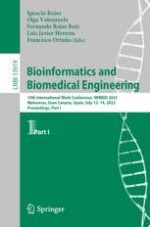2023 | OriginalPaper | Buchkapitel
Exploring Machine Learning Algorithms and Protein Language Models Strategies to Develop Enzyme Classification Systems
verfasst von : Diego Fernández, Álvaro Olivera-Nappa, Roberto Uribe-Paredes, David Medina-Ortiz
Erschienen in: Bioinformatics and Biomedical Engineering
Verlag: Springer Nature Switzerland
Aktivieren Sie unsere intelligente Suche, um passende Fachinhalte oder Patente zu finden.
Wählen Sie Textabschnitte aus um mit Künstlicher Intelligenz passenden Patente zu finden. powered by
Markieren Sie Textabschnitte, um KI-gestützt weitere passende Inhalte zu finden. powered by
